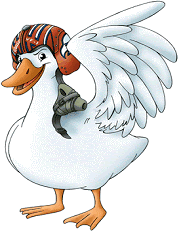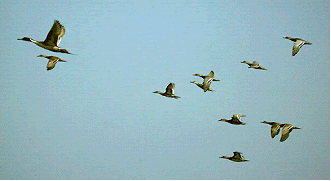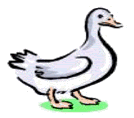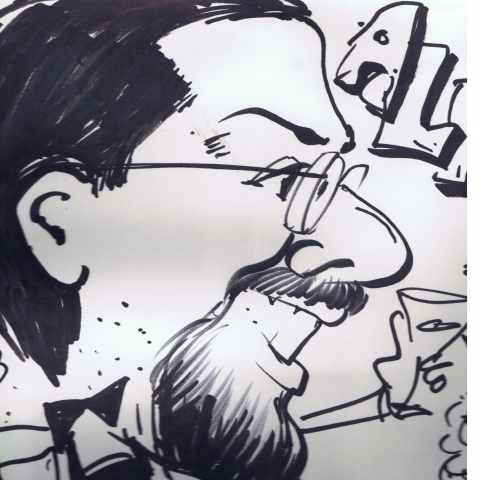 Team diversity and cohesiveness – An Essay
Team diversity and cohesiveness – An Essay
I am a strong believer in the idea that something good almost always comes out of everything that goes in life. Let us take the example of geese crap that we are trying to avoid stepping into every morning in front of our office building now a day while muttering some not-so-pleasant things. Couple that with a comment that an irate colleague made some time ago – “It is hard to soar like an eagle when you are flying with ravens”
And it occurred to me that we definitely do not want to be like ravens but neither do we want to become like eagles with highly individualistic and solitary attitudes (read no team work). Rather we need to become more like geese (sans the crapping part of course 🙂 ).
Let me explain this apparently bewildering idea:
Recent advances in behavioural sciences suggest that a successful team has both diversity and cohesiveness. Now this diversity is not of race, gender or the beak sizes but of old and new blood.
Sociologist Brian Uzzi, associate professor of management and organizations at the Kellogg School of Management says that successful teams make effective use of experienced people who have not worked together before while the unsuccessful teams repeat the same collaborations over and over again.
In the case of geese, Mother Nature takes care of providing the new blood by employing tools as predators and other natural hazards. We being human beings would for sure like to control this process and this takes us to the leadership.
Team diversity is an important feature of modern workplace today. In addition to welcoming new team members on board and understanding a diverse mix of attitudes, values and characteristics, there are many other issues that the leader needs to take into consideration. Mark McCrindle of The Australian Leadership Foundation, a social researcher and leadership expert, suggests some key issues for leaders which include understanding and leading the new generations, managing multi-generational teams, building teams in individualistic times, understanding leadership styles that work best today, conforming to the latest trends in the workplace, and training potential leaders.
Team cohesion also plays a vital role in achieving successful results. The primary requirement in building a strong synergistic unit is that there should be a high degree of interdependence and trust among team members. They should be clear about goals and be capable of establishing targets .
Therefore assembling a successful team depends on achieving the “bliss point” intersection between diversity and cohesion. Diversity represents new collaborations, while cohesion comes from repeat collaborations. New collaborations are necessary to get creative ideas flowing and breaking up the monotony. New team members can add zest and effectively build upon the experiences of the old team members. Repeat collaborations are only worthwhile if they yield successful results, help team members to learn from previous experiences, are receptive to new ideas and willing to improve operations. 
Hmm, where are the geese? Lets get back to them.
Wild geese flying in a V-shape can teach us the following lessons:
1 When each goose flaps its wings, it creates uplift for the birds following. By flying in a “V” formation the whole flock adds 71per cent more flying range than if each bird flew all by itself.
Lesson: People who share a common direction and a common goal can get where they are going quicker and easier because they are traveling on the thrust of one another.
2 Whenever a goose falls out of formation, it suddenly feels the drag and resistance of trying to fly alone and quickly gets back into formation to take advantage of the lifting power of the birds immediately in front.
Lesson: If we have as much sense as a goose, we will join formation with those who are headed where we want to go.
3 When a lead goose gets tired, it rotates back into formation and another goose flies at the point position.
Lesson: It pays to take turns doing the hard tasks and sharing leadership — we make more progress as we depend on each other for help.
4 The geese in formation honk from behind to encourage those up front to keep up their speed.
Lesson: We need to make sure our honking from behind is encouraging — not something less helpful, annoying or demoralizing.  Studies have confirmed that effective teams frequently improve the quality of work life for the employees. An effective team is generally the one in which members are empowered to make decisions about how to get work done. This is a strong motivator that helps to create a satisfying and rewarding work environment. This type of a work environment further leads to lower absenteeism and turnover.
Studies have confirmed that effective teams frequently improve the quality of work life for the employees. An effective team is generally the one in which members are empowered to make decisions about how to get work done. This is a strong motivator that helps to create a satisfying and rewarding work environment. This type of a work environment further leads to lower absenteeism and turnover.
So happy honking team!
Regards,
//Ali


Shahid Ashraf said on
Perfect example of geese formation to teach us a lesson of team work, collaboration, common goals and values, diversity and understanding each other strengths! I would dig future that diversity plays a successful role in success of companies! The diversity of role served by either men or women should be based on talent and performance rather than nepotism, person bias etc